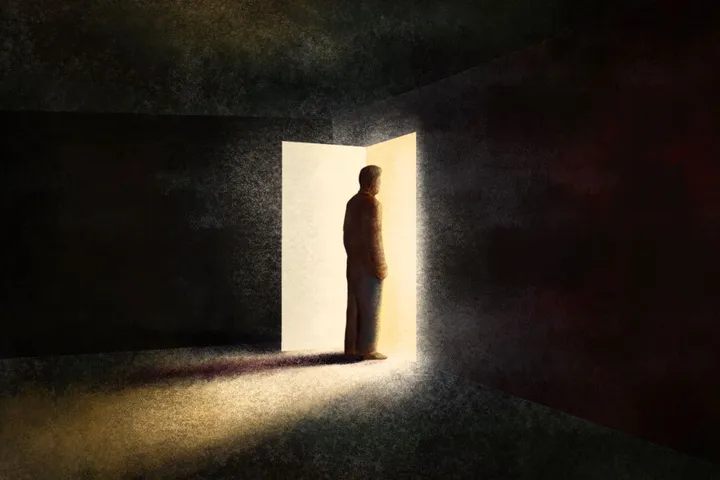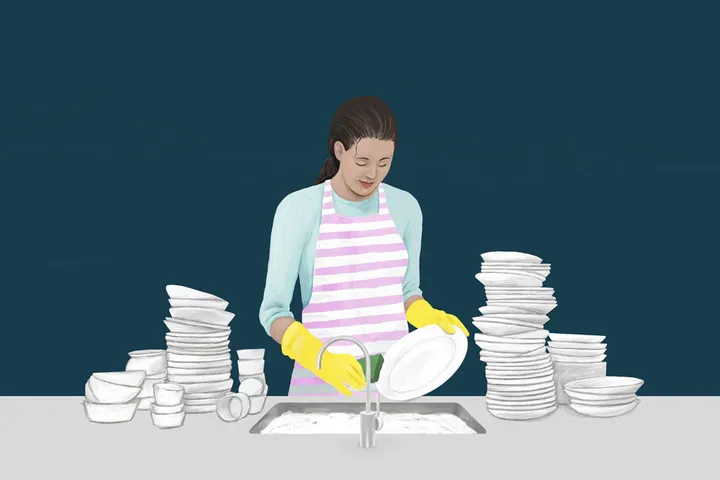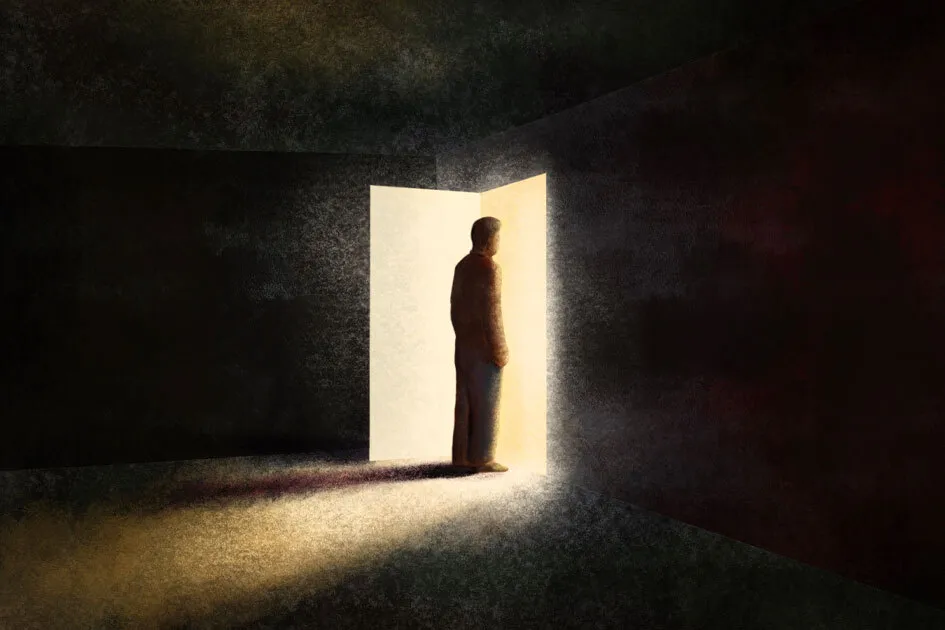Sacrifice is weird. And if you’ve read the Old Testament lately, you’ve noticed there’s a lot of it in those 39 books. But why? A quick look at Israel’s sacrificial system can make one wonder whether all these animal carcasses point to a God who needs His pound of flesh in order to be satisfied. But we know God is hardly a malevolent carnivore with an insatiable taste for fresh meat.
This is probably why Leviticus is such a strange book to modern ears—it’s all about sacrifice. Many who try those Bible-in-a-year reading plans get hung up around Leviticus, with its purity laws and priestly regulations, but it’s actually a powerful book that points us in eye-opening ways to Jesus.

A helpful start is to recognize the book’s structure—Leviticus uses a Hebrew literary device known as a chiasm. This means the “bookends” are the same, and working toward the middle are sections that mirror each other; the center is the climax or “main point” of the work. At the center of Leviticus is the Day of Atonement—the highlight of the book we’ll explore later—but the sections surrounding it establish the sacrificial system with the priesthood and point us to life-changing truths along the way.
Life Is Gift
Leviticus opens with different types of sacrifices and offerings. The practice may be bizarre to us today but was common in the ancient world. From Egypt to Italy, China to Mexico, and powerful civilizations to nomadic peoples, it was a staple of many cultures.
Why? In part, it was to publicly recognize that life is a gift—that we are dependent on the broader creation to receive life and sustenance. (Try going 40-plus days without food or water, and this truth will hit home quick!) Whether it’s the animal whose life is given, the fruit plucked from the tree, or the grain beheaded from its stalk, we must receive sustenance from outside ourselves, life from life given, in order to truly live.
And the proper response is gratitude.
Many of Israel’s sacrifices were simply ways of saying “Thank You” (such as the grain and peace offerings) and “I’m sorry” (such as the sin and guilt offerings). The fact that life is a gift can be hard for us to remember today. We get our meat neatly wrapped in plastic, cut into perfect proportions, clean and sanitized. We’re disconnected from the processes behind the scenes—from the sacrifices that have been made to sustain our life.
With this disconnected approach, it can become easy to live under the illusion that we are autonomous individuals who run on our own steam rather than creatures who belong to the creation that sustains us—and ultimately to the Creator from whom it has come. The most honest way to receive life is to acknowledge that it is given. Our lives are not earned but received; our breath is upheld by gift.
And the appropriate reaction is thankfulness.
The most honest way to receive life is to acknowledge that it is given. Our lives are not earned but received; our breath is upheld by gift.
When we deny this, we cut against the grain of the universe. Around the world, sacrifice was often at the center of community celebration. This was true for Israel as well. Her major national festivals (outlined in Leviticus 23-27) were organized by the priests, and sacrifice was at the center of their labors. The people would come to offer their sacrifices, celebrating who God is and what He had done in their history.
Then they ate the meat. This may seem too obvious to mention, but some people seem to think animals were just killed and then tossed in the trash. For Israel, however, the bulk of the food wasn’t thrown away; rather, it provided for the Levites (the tribe of priests, who didn’t own land) and for the nation’s celebrations (massive festivals that would last for days on end). Community formation was in view—the Israelites were to be a people characterized by humility and gratitude before their King.
I think I got a sense of this once, attending an indigenous ceremony in which gratefulness was publicly expressed for the lamb that was about to become the shared meal. Laying her hands on the young sheep’s head, the elder spoke a prayer of thanks for the provision the animal was about to bring. Far from devaluing the creature, the ceremony added a sacred significance to its great worth in giving its life for the community.
Today, we as the church are also a community gathered around sacrifice—the greatest act of self-giving our world has ever seen: our Savior’s death on the cross. Jesus unveils, in an even more profound way than the animals of old ever could, that we are not able to manufacture life from within ourselves. Rather, we must receive it through the grace of His life, given in order that we might truly live. Around the table of His body broken and blood shed—the Lamb once slain (Heb. 9:28)—we gather in celebration as a community, to say “Thank You” and “I’m sorry” to our God. It’s here we discover most fully the extent to which life is gift: His life is gift, freely given.

And the proper response is gratitude.
Soaking Up Death
The next section of Leviticus (chapters 8-10) focuses on the priesthood. God appointed one of the 12 Israelite tribes, the Levites, to be priests—mediators between God and His people. The name of the book, Leviticus, actually means “book of the Levites,” as it’s centered on this priesthood of Israel. The Levites were in charge of the sacrificial system and the place where it was centered: the tabernacle in the wilderness, and later the temple, where God’s holy presence dwelled amidst His people. There were specific rules of conduct for priests (Leviticus 21-22, the mirroring section), setting them apart as holy to minister before the Lord.
The third section of Leviticus focuses on purity. Israel’s sacrificial system was set up to deal with two types of impurity, or uncleanness. For the first kind—ritual impurity (addressed in chapters 11-15)—you could become unclean by touching dead bodies or being in contact with things such as mold, skin disease, or bodily fluids.
This didn’t mean you’d sinned or done something morally wrong per se—it’s not as though you killed someone or robbed a bank. We tend to think of this kind of impurity as arising from misdeeds, but in fact it emphasized something different: The problem was being in contact with things associated with death. Such things could transfer their contamination to you because, unfortunately, death spreads.
In an age of disease and bacteria, ritual purity promoted health and community hygiene for ancient Israel. It also gave an overwhelming sense that the Creator is a God of life, with an awareness that death and disruption are connected to our distance from Him. As my friend Gerry likes to say, waltzing into the presence of God while ritually impure was something like me coming home a sweaty mess from playing basketball and trying to hug my wife. She plugs her nose and says, “You stinketh! Go take a shower.” I haven’t necessarily done anything wrong, but I’m not in a good state for hugging my wife.
The sacrificial animals were like wool sponges, absorbing your destruction. They took upon themselves both the death we’re afflicted by and the death we unleash.
Regarding Israel, Leviticus was saying you could go on with your life while ritually impure and still follow God; you just couldn’t “hug” Him—that is, you couldn’t enter the spaces of His intimate presence in the temple. If you’re going to get right up in God’s orbit, you needed to get clean first, with something to rid you of corruption. So you’d wait a day, take a bath, then offer a sacrifice to absorb any remnant “death state” on you.
Ritually clean, you could once again stand in the life-giving presence of God.
The second kind of uncleanness was moral impurity. The mirroring section of Leviticus (chapters 18-20) outlines violations—against social justice, sexual integrity, and healthy relationships—that would make one morally unclean. Such willful rebellion was, of course, the means by which death had entered in the first place, the crack in the world through which corruption had invaded and infested the masterpiece of God’s creation.
So both moral impurity and ritual impurity had one thing in common: They were associated with death. And like darkness in the face of the sun, death could not live in the presence of God. The sacrificial animals were, then, like wool sponges, “soaking up death” off you, absorbing your destruction. They took upon themselves both the death we’re afflicted by and the death we unleash. The Creator grabs the wool sponge and scrubs the junk off us—to wash us clean and make us fit for life.
The Day of Atonement
This brings us to the climax of Leviticus at the center of the book: the Day of Atonement. What was this day all about? Atonement means “at-one-ment.” It’s a way of making two things one. Sin rips God and humanity apart; atonement brings them back together. The Israelites were a large people group, and who knows how much naughtiness and corruption was going on behind the scenes, tearing the nation from God all year long. So once a year this public event was held to atone for the guilt and impurity of the people as a whole, to reconcile them back to God.

On the Day of Atonement, two goats were brought to the temple. The high priest would kill the first goat and sprinkle its blood in the Most Holy Place (the entrance to the Holy of Holies, where God’s presence most intimately dwelt); this was done to deal with “the uncleanness and rebellion of the Israelites, whatever their sins have been” (Lev. 16:16 NIV). The high priest would then take the second goat, place both hands on its head, and confess the wickedness of the people—“laying” the sins of Israel on the animal that was then sent away into the wilderness.
What was going on with these goats? They are a picture of exile and death.
The second goat, sent away into the wilderness, is a picture of exile. Like Adam and Eve driven from the garden of Eden, or Israel eventually driven from the land, the goat was driven from the promised land—carrying the sins of the people into the wilderness. Imagine that while watching the goat walk off into the sunset, you have this thought: There goes our corruption, our abuse, our adultery and greed. I think you’d feel the weight of sin’s impact at a deep level.
The animal goes into exile so the people don’t have to.
“The wages of sin is death,” Paul tells us in Romans 6:23. And the first goat soaks up the people’s destruction as a substitute, his blood cleansing the temple sanctuary, removing the corruption from the land. What would it be like to see this animal as bearing the weight of your community’s murder, mayhem, and madness? I can’t help but feel the Day of Atonement would have given Israel a heightened sense of public justice. That it helped them take the weight and gravity of evil more seriously. Sin has consequences; rebellion leads to destruction.
Jesus fulfills the sacrificial system. Israel’s sacrifices were only a shadow of the good things to come.
This Day of Atonement points us to Jesus. When Jesus was led out of the temple, handed over to the Gentiles, and made to carry the cross upon His back through Jerusalem’s gates and outside the city, He was the scapegoat carrying our sin into the wilderness wasteland. Like the second goat on the Day of Atonement, Jesus—in His redemptive humanity—bore our exile, erasing the distance between us and the face of our Father.
When Jesus died, He was our perfect substitute. Like the first goat on the Day of Atonement, He bore the destructive power of our rebellion, the decay we’ve unleashed in His creation. Jesus took our death when He went into the tomb, and He did it to accomplish at-one-ment—to put together what sin had torn apart, reconcile heaven and earth, and bring us back up from the grave as His people.
Jesus fulfills the sacrificial system. Israel’s sacrifices were, Hebrews 10:1 tells us, “only a shadow of the good things to come.” They had to be offered repeatedly to keep Israel clean, as they were unable to penetrate the depths of worshippers’ hearts. But when our Savior laid down His life, He “offered one sacrifice for sins for all time” so that we who are united with Him can “have confidence to enter the Holy Place by the blood of Jesus ... [and] draw near with a sincere heart” (Heb ¤ 10:12; Heb ¤ 10:19; Heb ¤ 10:22). Do you recognize all that Leviticus imagery? Jesus is both our High Priest who offers the sacrifice and the sacrifice offered to bring us back into the presence of God. The Lord of life gave Himself that we might live—and our proper response is gratitude.
Illustrations by Tim McDonagh





